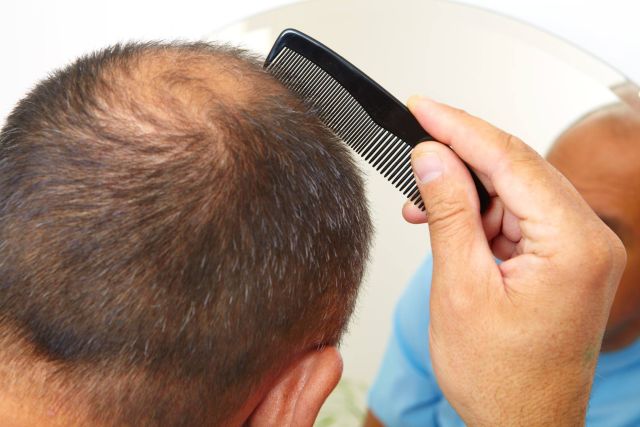Researchers from Icahn School Of Medicine On The Way To Finding Treatment To Prevent Hair Loss And Baldness
Medical researchers from Icahn School Of Medicine, Mount Sinai say a new
hair growth discovery might help men keep their locks for a lifetime. The new insight involves a structure lying within the
hair follicle.

Lead researcher Dr. Michael Rendl, an associate director of the Black Family Stem Cell Institute at the Icahn School of Medicine at Mount Sinai, in New York City told
Thailand Medical News, "Our major discovery is a previously unknown smooth muscle that surrounds
hair follicles and is called the dermal sheath."
Dr Rendl explained that in the life cycle of each human
hair, a new
hair shaft is created by so-called dermal papilla cells. These specialized cells begin at the base of growing
hair follicles, but then move slowly upwards toward stem cells that are found at the follicle's tip.
Typically, these stem cells receive signals from the nearby dermal papilla cells "to start the next growth phase and make a new
hair shaft, while the previous
hair shaft is shed," the researchers explained in a Mount Sinai news release.
The problem is that, sometimes this cell-to-cell partnership gets interrupted. And that could play a role in
hair loss.
For a long time, one question that's long puzzled researchers is how the dermal papilla cells travel up towards the stem cells.
Experimenting with animal models, "we found an answer for how this works by discovering that the dermal sheath surrounding growing
hair follicles is a smooth muscle, whose function is to contract and push up the
hair shaft and pull up the dermal papilla," Dr Rendl said.
Further detailed experiments suggest that human
hairs follow a similar mechanism, his team said.
In the
hair "destruction" phase of the
hair-growth cycle, the dermal sheath contracts, allowing for existing
hair strands to fall out. This happens naturally in full heads of
hair, but when it occurs too often, baldness can begin to set in.
According to Dr Rendl, this new insight into how the dermal sheath works could re-focus research into
hair loss.
Dr Rendli explained, "Blocking the newly discovered muscle and its contraction cannot cure
baldness caused by those processes. Instead, blocking contraction and arresting the destruction phase of the cycle has the potential to retain the existing
hair shaft that is otherwise lost when a new
hair shaft is produced.
Dr Rendl added, "This type of muscle cannot be controlled voluntarily, it is similar to the ones in blood vessels.But we can control it by drugs that can
block contraction."
This means that men might someday have a treatment that simply allows them to maintain the head
hair they have now, instead of slowly losing it.
Dr Rendl added, "We are excited about the possibility to develop methods for blocking sheath contraction, stopping follicle regression and preventing the loss of the existing
hair before a new
hair can grow."
A leading dermatologist who knows about
hair loss said the findings might offer new hope to follicularly challenged men.
Dr. Michele Green, of Lenox Hill Hospital in New York City commented, "The future of hair loss looks very promising and this study shows that
baldness may soon be optional. There have been numerous research efforts into regenerating
hair, but this study shows that the dermal sheath can preserve the
hair follicle to regenerate new
hair growth.”
Dr Green added, besides potentially arresting the
hair-growth cycle before its "destruction" phase, tweaking the dermal sheath might also "prevent the
hair follicle from going dormant. That's important, because "dormant
hair follicles cannot be restored, therefore cannot regenerate
hair."
Still, a cure for
balding pates isn't around the corner, Rendl stressed.
Dr Rendl added,"There is a longer way to go realistically before blocking contraction of the sheath muscle can be made a reality to halt the
hair cycle in the destruction phase. It needs to be proven effective in human
hair follicles in the dish first and proven safe after knowing what happens to the arrested follicles long-term. Still, we are excited about exploring this.”
The findings were published Dec. 19 in the journal
Science.
Reference : Nicholas Heitman et al. Dermal sheath contraction powers stem cell niche relocation during hair cycle regression, Science (2019). DOI: 10.1126/science.aax9131
